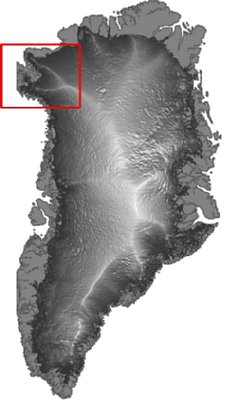
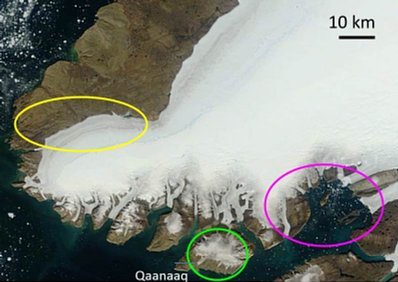
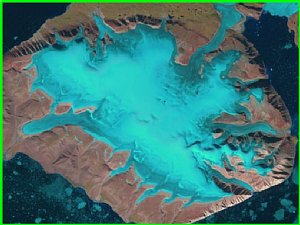
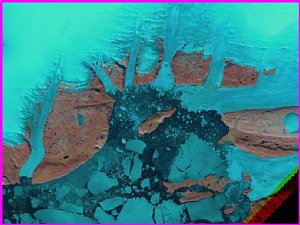
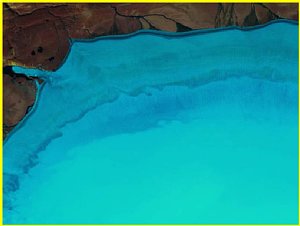
From left to right; location of Qaanaaq in Greenland, study region, Qaanaaq ice cap, calving glaciers and Inglefield Bredning, darkened ice sheet fringe.





From left to right; location of Qaanaaq in Greenland, study region, Qaanaaq ice cap, calving glaciers and Inglefield Bredning, darkened ice sheet fringe.
Qaanaaq drainage basin
Our study site is a drainage basin extending to the east of Qaanaaq, a
small village in the northwestern Greenland. The basin consists of
inland accumulation area, recently darkening ablation area, and
numbers of fast flowing outlet glaciers, forming a typical drainage
basin in Greenland. The location (77-78° N) is far from relatively
more populated southern Greenland, and thus only a few field
measurements have been carried out in this region. Another important
aspect is many ice caps and glaciers physically isolated from the ice
sheet, existing in the coastal regions of the basin. These ice bodies
are losing mass very quickly, but details are not known as compared to
the ice sheet itself. We study surface mass balance and calving
processes of the ice sheet, as well as mass budget of ice caps and
glaciers in the coastal regions, to evaluate their contributions to
ice mass change in Greenland.
Qaanaaq ice cap
In the summer 2012, we visit Qaanaaq for
field
measurements on Qaanaaq ice cap, approximately 20-km-wide ice cap
covering an elevation range from 250 to 1000 m a.s.l. We established
survey profile from the ice cap summit down to the terminus of one of
the outlet glaciers. Using stakes installed along the profile, we
measured melt rate and ice flow speed during the summer period. The
stakes will be maintained for the next several years for annual mass
balance and ice flow measurements. Ice thickness and surface elevation
were surveyed along the profile with ice radar and GPS devices. These
field data are used to develop a two-dimensional thermomechanical
glacier model.
Calving glaciers
Another focus of our study in Qaanaaq region is outlet glaciers
calving into Inglefield Bredning. Our satellite data analyses show
most of the glaciers are retreating over the last decades. Some of the
large glaciers, including Tracy Glacier located at inner most part of
the fjord, are rapidly retreating and speeding up after
2000. Following aerial reconnaissance in 2012, field campaign is planned
in the summer 2013 to investigate calving glacier dynamics and
ice-ocean interaction. Ice discharge from these glaciers are very
important for the mass budget of the ice sheet as well as ocean
environment and processes in the fjord.
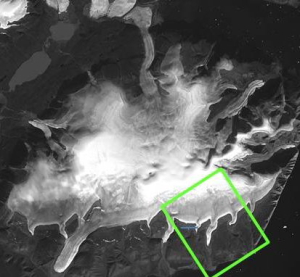
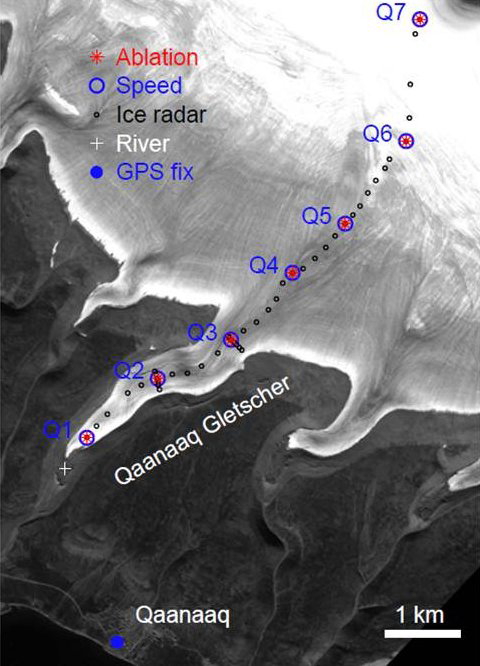
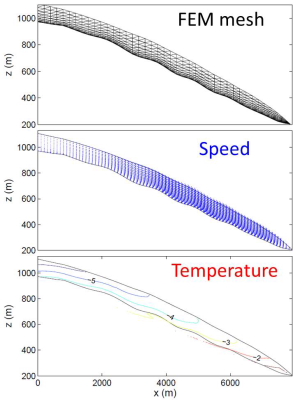
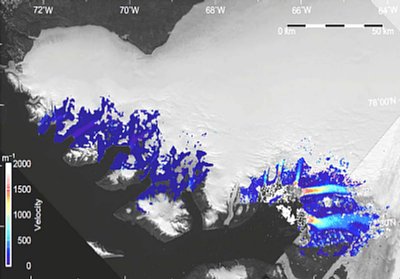
From left to right; Qaanaaq ice cap, study site in 2012 field campaign, two-dimensinal glacier model, and ice speed of calving glaciers.
- Sugiyama, S., M. Matoba, S. Yamaguchi, D. Sakakibara,
S. Matsuno. 2013. Ice mass loss in northwestern
Greenland. Proceedings of the 3rd International Symposium on Arctic
Research, January 2013, Tokyo. [PDF]